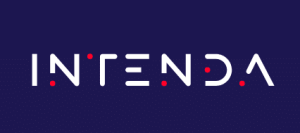Our client is a global shipping company with over 1,500 personnel and worldwide operations that include a strong footprint in Africa.
A global logistics operation is innately vulnerable to bottlenecks in the supply chain, due to the sheer number of entities and moving parts involved in the business.
Data-driven transformation of the logistics sector is a key focus area in the Fourth Industrial Revolution. As part of its efforts to accelerate data-driven transformation within the company, the client ran a pilot project with the aim of achieving the following:
· Reducing the time-to-market for data analyses to internal and external stakeholders.
· Increasing transparency in operational processes, reporting and control through the creation of a data platform that connects data with its producers and consumers.
· Sweating company assets by leveraging off existing application platforms and extending system functionality through a data federation platform, to enable seamless system integration and integrated real time reporting.
· Reducing double capturing through data distribution to federated data sources and connecting to unstructured data in order to improve operational efficiencies.
Our first step in solving the client’s need was to introduce Fraxses as a data federation platform to connect seamlessly to data sources (both structured and unstructured) and create multiple layers for data consumption.
Next, we implemented an application platform that would enable centralised capturing, document management and real-time integration of online data sources.
We took a low-code/no-code approach to accommodate stakeholders with limited technical knowledge, ensuring that they can always understand how their data is being handled and processed.
The process entailed collaborating with the client and engaging proactively with all internal stakeholders (including those from IT and Operations) to establish what platform enhancements would best accelerate their development, and applying a metadata approach (connect rather than collect), keeping data where it belongs and making it rapidly accessible on demand.
The system also provides real-time generation of data lineage for up-to-date documentation at all times, and automated relationship discovery to decrease time spent on understanding new data sources and their relevance to existing ones.
To add further value, we created data input screens that enabled the client to centrally capture commodity-specific transactional information, and federate that data to its legacy operational systems.
We then enabled an electronic document management system through which operational documents can be stored against transactions, and integrated it to an online shipping portal that visualises active shipping instructions in real time.
We reverse-engineered operations reporting from both structured and unstructured data sources to create an online dashboard with 360 views of federated data across all of the client’s operational processes.
Throughout the project, we created fully operational prototypes to prove performance and scalability from start to finish, and were able to demonstrate the system’s capability to provide data-driven insights within days or hours, rather than weeks or months.
We created a platform for the client that leverages the power of new technology but ultimately serves as the data fabric that connects all types of systems within the client’s organisation, from in-house developed production systems to databases, APIs and unstructured data sources.
This project delivered several major benefits for the client:
· Streamlined monitoring and reporting:
Monthly reports that had previously taken days and sometimes weeks to compile were made accessible in real time.
· Centralised data capturing:
By enabling staff to focus on operational activities instead of double capturing data, an estimated 20% of productivity was saved per controller, daily.
A holistic view of operational transactions (this cannot be translated into time saved as this information was not available prior to the implementation of Fraxses).
· Reduced reliance on Excel:
A systems-driven process enabled consolidated views of commodity-specific data throughout the business. Functional managers now have at least 50% more time to focus on operational inefficiencies and drive profit margins up.
· Development time was reduced to days rather than months, and costs were cut drastically:
E.g., a typical report from a legacy system could take anywhere from 4 to 6 weeks to compile and cost on average $4,000 per report. Fraxses reduced this time to 16 hours and cost just 15% of the previous amount per report.
Thank you for contacting us.
We will be in touch shortly.
